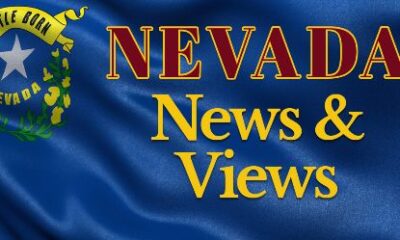(NPRI) – Are federal taxpayer dollars going to political consultants working to re-elect first-term Nevada Congresswoman Dina Titus?
That’s just one of many questions raised by official new data from the U.S. Congress, now easily available to the public at TransparentNevada.com. Released to the public by House Speaker Nancy Pelosi, the data shows the office spending of Nevada’s U.S. representatives for last year’s third quarter.
While spending for office printing and reproduction by representatives Dean Heller and Shelley Berkley was $302 and $1,741, respectively, Nevada District 3’s new congresswoman, Dina Titus, spent $34,410, according to the report from the House of Representatives’ Chief Administration Officer.
Drilling down further into the data reveals by far the biggest item: a $29,000 payment to Erwin and Muir, a Bay Area political consulting and public affairs firm.
Andrew Stoddard, a Titus spokesman contacted via e-mail, declined to explain or directly address the payment to Erwin and Muir, but did reply that:
“Congresswoman Titus’ job is to represent the people of the Third District and be a powerful voice on their behalf. In order to do so, she utilizes a number of tools to stay in contact with Southern Nevadans, from Congress on the Corner and town halls to updates on her work in Congress and surveys on issue of importance. These mailings provide an opportunity to inform the people of District Three, the most populous district in the country with nearly 1 million residents, about the critical work going on in Washington as well as listen to their feedback on issues that are being debated in Congress.”
Stoddard added, “Everything that is sent out is approved by the bipartisan Congressional Franking Commission to ensure that the communication is appropriate and not campaign related or political.”
Such mass mailings, known as “franked mail” — from the Latin word francus, meaning “free” (to members of Congress) — have long been a point of contention for good-government advocates, who acknowledge the need for elected representatives to reach out to their constituents but worry about possible abuses of taxpayer-financed publicity.
As Mary Boyle, a spokeswoman for Common Cause, said in a 2007 case, “We certainly hope the frank is being spent on solid communications with voters, and not being used as a thinly guised campaign ad.”
Full spending reports for the quarter for all three Nevada representatives can be found at http://transparentnevada.com/disbursements/2009/Q3/. As new data (officially known as the congressional “statement of disbursements”) is made available by the House, the site will be updated. Senate office data will be added when that chamber begins posting its data.
Since 1964, Congress has been required by law to publish a quarterly public report of all receipts and expenditures for Members of Congress, Committees, Leadership, House Officers and Offices of the House of Representatives. The physical report — traditionally bound in three volumes with over 3,000 pages — was, for the first time in December 2009, made available to the public in digital PDF form.
The Sunlight Foundation, a leading transparency-focused non-profit, then made the data available to the wider public in formats appropriate for search.
Also now featured on TransparentNevada are:
• Salary information on employees at the University of Nevada, Las Vegas. Covering 3,212 employees in 191 departments, this feature is a comprehensive and searchable database that allows regular citizens the ability to see exactly who is getting paid what at UNLV. Visitors can find the salaries at http://transparentnevada.com/unlv/.
• The Clark County School District’s recent report to the Nevada Legislature on its expenditures for consultants. The data can be sorted by several different columns: name of vendor, purpose of contract, amount paid, start date, end date or the fund from which the district pays the contract.
Multiple other improvements to TransparentNevada.com have been implemented in the past few months. The website now features 2008 salary data from numerous counties along with the existing 2007 data numbers. A re-designed interface allows for easier navigation, and a revamped search feature is faster and more powerful. Additional improvements are on the way.
“The mission of TransparentNevada is to bring accountability and openness to the most powerful institution in society – government,” said Steven Miller, vice president for policy at the Nevada Policy Research Institute, which operates TransparentNevada as a public service. “Citizens and taxpayers deserve to know how and where their hard-earned money is being spent, and we at NPRI are committed to making that information available.”




Facebook
Twitter
Pinterest
RSS